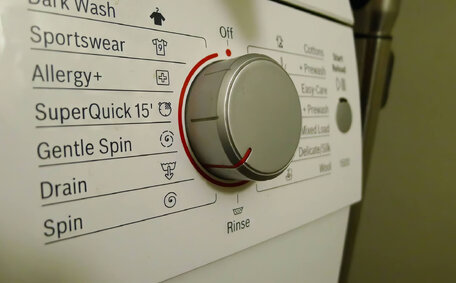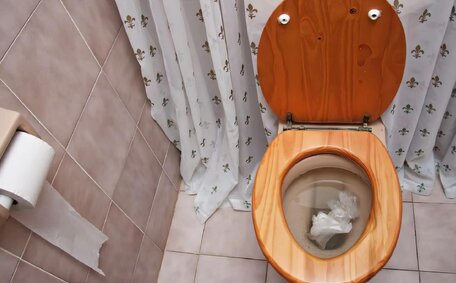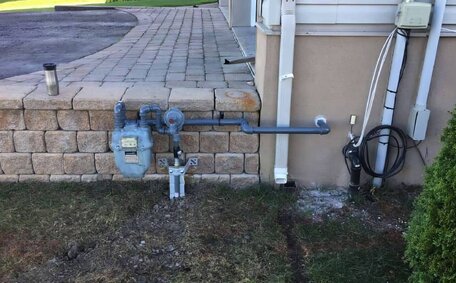What Is a Professional Plumbing Inspection?
A professional plumbing inspection involves a licenced plumber thoroughly checking the plumbing system in your home. This includes inspecting the water pressure, pipes, drains, fixtures like sinks and toilets, water heaters, and appliances connected to the plumbing like dishwashers and washing machines.
The plumber will use specialised tools like cameras to look for any leaks, clogs, or other issues that may be developing in your plumbing system. Problems like corroded pipes, blocked drains, and faulty valves or seals can lead to water damage, sewer backups, and expensive emergency repairs if not addressed early.
A plumbing inspection helps identify and resolve minor problems before they become major. It also provides peace of mind that your plumbing is in good working order and helps prevent costly repairs down the road.
Why Regular Plumbing Inspections are Crucial
Regular plumbing inspections are crucial to help maintain your plumbing system and prevent issues before they become major problems.
Routine plumbing inspections allow a professional to thoroughly examine your pipes, drains, water heater, fixtures, and other components for any signs of wear, corrosion, leaks, or blockages. Catching minor problems early is key to avoiding expensive emergency repairs down the road.
Plumbing inspections also ensure your water pressure and drainage are operating optimally. A drop in water pressure or slow draining could indicate an underlying issue like mineral deposits or a partial blockage starting to form.
Regular inspections help keep your plumbing up to code and functioning safely. Faulty plumbing can create hazards like gas leaks, flooding, electrical issues from contact with water, and more.
While the frequency depends on factors like your home’s age, it’s generally recommended to get inspections every 1-2 years. Older homes or those with surrounding trees may need more frequent inspections. Preventative plumbing maintenance is the best way to extend the life of your plumbing and avoid catastrophic failures.
Detecting Issues Early
Professional plumbing inspections play a crucial role in detecting issues early, before they become major problems. An experienced plumber has the expertise to spot subtle signs of trouble that a homeowner may miss.
During an inspection, a plumber will thoroughly check pipes, drains, water pressure, and fixtures using cameras, leak detectors, and other specialised tools. This allows them to identify problems like corroded pipes, small leaks, clogged drains, and faulty parts.
Catching these minor issues quickly is key. A small leak from a worn pipe seal may only cause a little damage now, but could lead to water pouring in and huge repair bills if not addressed. A partially clogged drain can turn into a full blockage and backup.
The recommended frequency for professional inspections allows plumbers to detect problems in the early stages when repairs are cheaper and easier. This helps avoid expensive emergency calls for burst pipes or backed up sewer lines down the road.
Regular professional inspections provide peace of mind your plumbing system is in good order. Potential issues get corrected before they escalate into crises that could damage your home or health.
Preventing Expensive Repairs
Regular professional plumbing inspections are one of the best ways to prevent expensive repairs down the road. During an inspection, a licenced plumber can identify minor issues like small leaks or partial clogs before they escalate into major problems.
A worn pipe seal that is slowly leaking water may only cause minor damage now. But over time, that leak could get much worse and lead to flooding, water damage to walls and floors, mould issues, and very costly repairs.
Catching this small leak early during a routine inspection allows the pipe seal to be proactively replaced. A quick $200 repair to replace the seal can prevent thousands of dollars in damage later on.
The same goes for spotting the early signs of a drain clog. A partial clog that’s detected during inspection can be cleared before it fully blocks the drain and requires digging up and replacing sewer lines.
Plumbing inspections also check water heater health, pipe corrosion, water pressure, and other factors that could lead to breakdowns and floods if not addressed in a timely manner.
While no inspection can catch every potential issue, regular professional check-ups dramatically improve the odds of finding problems before the damage is done. Proactive maintenance saves homeowners money and prevents headaches down the road.
Maintaining Safety
Routine plumbing inspections are crucial for maintaining safety in the home. An experienced plumber carefully checks gas fittings and appliances during an inspection to detect any leaks or issues that could put your home and family at risk.
They also examine water pressure to ensure it is within the safe operating range. Too high or too low water pressure can cause problems and damage. Proper water pressure helps ensure showers, taps, and appliances like washing machines function safely.
Inspections also look for issues like faulty electrical connections, broken or leaking sewer lines, and corrosion that could all create health hazards if not addressed. Industrial waste or sewage leaking into the environment can create serious illness risks.
Having a professional plumber routinely inspect the plumbing system provides peace of mind your home’s water and gas systems are operating safely. Detecting and repairing problems promptly also helps prevent potentially dangerous failures or accidents down the line.
What to Expect During a Plumbing Inspection
When a professional plumber arrives to perform an inspection of your plumbing system, they will thoroughly examine all aspects to check for potential issues. Here is what you can expect during a typical plumbing inspection:
Areas Checked
The plumber will inspect the following areas:
- Water supply lines and water pressure
- Main water shutoff valve
- Water heater
- Drain lines and P-traps
- Sewer line and septic system, if applicable
- Fixtures such as faucets, showerheads, and toilets
- Pipe quality and any corrosion
- Gas lines and appliances like water heaters and stoves
Tools Used
The plumber will utilise specialised tools such as:
- Video camera to look inside drains and pipes
- Leak detectors to check for any escaping water
- Pressure gauge to test water pressure
- Pipe inspection camera to examine pipes and fittings
They may need to open access panels or utilise other means to thoroughly inspect the system. Having all areas clear and accessible ahead of time facilitates the inspection process.
Inspection Process
The plumber will typically:
- Ask questions about your plumbing history and any known issues
- Check water pressure at several faucets
- Run water through fixtures to check function and drainage
- Inspect pipe quality and fittings
- Use cameras to examine interior of pipes and drains
- Look for signs of leaks, corrosion, blockages, etc.
- Discuss any concerns discovered and next steps
The inspection provides valuable preventative maintenance and allows any minor issues to get addressed before they become major. Following the plumber’s recommendations helps keep your plumbing system running efficiently.
How Often to Get Inspections
It’s generally recommended to have a professional plumbing inspection done every 1-2 years. However, there are several factors that can influence how often you should get inspections:
- Home Age: Older homes, especially those over 50 years old, should get inspections more frequently - every year is ideal. Old pipes and fittings may be nearing the end of their lifespan and prone to issues.
- Pipe Types: Homes with galvanised steel pipes, clay pipes, or very old PVC will need more frequent inspections as they are more likely to have corrosion, cracks, or blockages.
- Surrounding Trees: Tree roots can infiltrate and damage pipes and sewer lines. Homes with lots of surrounding trees should get annual inspections.
- Known Problems: If you’ve had plumbing issues in the past, it’s wise to get inspections done at least yearly.
- Major Renovations: After undergoing kitchen or bathroom renovations, new plumbing should be inspected after a few months to check for any defects.
While every 1-2 years is the general rule of thumb, considering your home’s unique factors allows you to dial in the ideal frequency for inspections. Being proactive prevents expensive plumbing emergencies and keeps your plumbing running efficiently for years to come.
For Older Homes
For homes over 50 years old, it is recommended to get professional plumbing inspections done annually. Older plumbing systems are more susceptible to issues like corrosion, leaks, and clogs.
With age, pipe materials like galvanised steel or cast iron become prone to rust and accumulations of mineral deposits inside the pipe that inhibit water flow. Old rubber gaskets and seals are more likely to crack and leak.
The older and more outdated your home’s plumbing materials, the higher likelihood of breakdowns and water damage. Tree root infiltration is also a bigger concern with ageing sewer lines.
Annual inspections allow a plumber to thoroughly examine an older system and proactively address small leaks or clogs before they become costly emergencies. This helps avoid water damage, mould problems, and very expensive repairs.
Consider replacing any pipes, drains, or outdated fixtures a plumber identifies as risk areas during the inspection. While inspecting and servicing older systems does cost more upfront, it saves thousands in emergency repairs down the road.
For Homes with Trees
Homes with many trees nearby often require more frequent plumbing inspections. Tree roots can infiltrate and damage underground sewer pipes if they are old or cracked.
Over time, small hairline cracks in clay or older concrete sewer pipes allow tree roots to slowly intrude. The roots grow inside pipes seeking water and can fully clog drains. Root cutting services can remove them, but they will regrow if the pipe integrity is compromised.
Trees like willows, elms, and cottonwoods are most problematic with their aggressive root systems. Even smaller shrubs can send out runners that infiltrate drains. A video camera inspection can check for root intrusion.
Homes bordered by wooded areas or with trees in the yard should get plumbing inspections yearly to check for root issues. A full blockage can cause sewage backups and require expensive excavation to access and replace pipes.
Inspectors can advise on pipe repairs, root shields, or trenchless sewer relining if roots are found. Taking preventative steps helps avoid major blockages and damage from tree roots down the line.
Signs You Need an Earlier Inspection
There are several warning signs indicating your plumbing system may need inspecting sooner than usual:
- A spike or drop in water pressure
- New stains on walls or ceilings from possible hidden leaks
- Slow draining sinks, tubs, or toilets
- Gurgling drains or foul sewer odours
- Leaky faucets or pipes
- Low hot water volume or issues with water heater
- Creaking, clanging, or banging noises from pipes
- Visible root intrusion on sewer line
- Any new plumbing issues cropping up
If you notice any of these red flags, contact a professional plumber to inspect your system right away. It’s much better to be safe and catch problems early before they escalate into costly repairs or water damage.
While the general rule is every 1-2 years, being attuned to your plumbing and getting inspections whenever anything seems off can prevent headaches down the road. Your plumber can determine if repairs or maintenance are needed.






